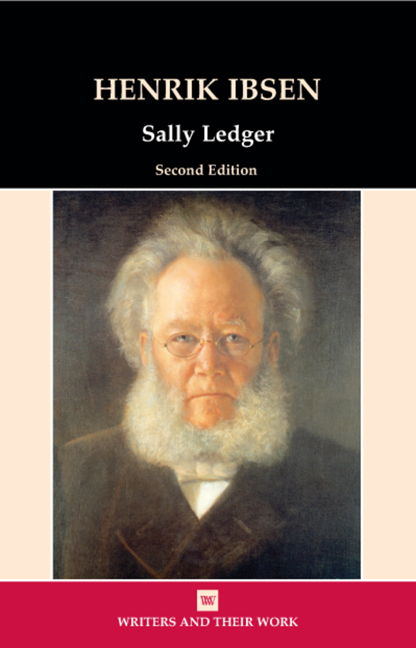Book contents
- Frontmatter
- Dedication
- Contents
- Acknowledgements
- Biographical Outline
- Note on Translations
- Abbreviations
- 1 Ibsenism and A Doll's House
- 2 Ibsen, Realism and ‘Modern’ Drama: From Norwegian Nationalism to Ghosts
- 3 Liberalism and its Discontents: Ibsen's Politics in An Enemy of the People
- 4 Ibsen's Women: The Lady from the Sea, Hedda Gabler and Little Eyolf
- 5 Ibsen, Freud and Psychological Drama: Rosmersholm and Peer Gynt
- 6 Beyond Realism: John Gabriel Borkman and When We Dead Awaken
- 7 Afterword: Ibsen Now
- Notes
- Select Bibliography
- Index
- Recent and Forthcoming Titles in the New Series of WRITERS AND THEIR WORK
5 - Ibsen, Freud and Psychological Drama: Rosmersholm and Peer Gynt
- Frontmatter
- Dedication
- Contents
- Acknowledgements
- Biographical Outline
- Note on Translations
- Abbreviations
- 1 Ibsenism and A Doll's House
- 2 Ibsen, Realism and ‘Modern’ Drama: From Norwegian Nationalism to Ghosts
- 3 Liberalism and its Discontents: Ibsen's Politics in An Enemy of the People
- 4 Ibsen's Women: The Lady from the Sea, Hedda Gabler and Little Eyolf
- 5 Ibsen, Freud and Psychological Drama: Rosmersholm and Peer Gynt
- 6 Beyond Realism: John Gabriel Borkman and When We Dead Awaken
- 7 Afterword: Ibsen Now
- Notes
- Select Bibliography
- Index
- Recent and Forthcoming Titles in the New Series of WRITERS AND THEIR WORK
Summary
In his 1909 study of obsessional neurosis, ‘The Rat-Man’, Freud recounts how this particular case had baffled him, seeming to resist all diagnosis, ‘until one day’, he writes, ‘the Rat-Wife in Ibsen's Little Eyolf came up in the analysis, and it became impossible to escape the inference that in many of the shapes assumed by his obsessional deliria rats had another meaning still – namely, that of children’. In Little Eyolf, the young, crippled child of Rita and Alfred Allmers is inexplicably lured to his death by the fairytale figure of the Rat-wife. Ostensibly inexplicable, his death can be understood in psychological terms as a fulfilment of Rita's desire to rid herself of the burden of motherhood. Psychologically it is her wish, never to have borne him, that strikes down the child. The Rat-wife's sinister question as she scuttles onto the stage – ‘Begging your pardon – have your honours any troublesome thing that gnaws here in this house? … I'd be glad to rid you of it, if there was any gnawing thing that troubled you’ (LEI, 233) – refers to the unwanted child's presence in the house. And yet Rita's reluctance as a mother is not straightforward. The repugnance she feels towards her son partly at least grows out of a sense of guilt that he fell and injured himself as an infant whilst she and Allmers were lovemaking. His crippled presence is now a constant reminder of that guilty act and of Alfred Allmers's subsequent sexual impotence. The psychological depth of Little Eyolf (1894), one of Ibsen's late plays, can be identified much earlier on in his dramatic output. The fact that Ibsen's middle and late plays tend to end with a discussion of a relationship, rather than with a denouement, is indicative of their psychological content. The tortured, painful conversation between Rita and Alfred Allmers at the close of Little Eyolf, for example, constitutes one of the most moving and memorable scenes in Ibsen's theatre. A Doll's House is an interestingly transitional play in this respect. For whilst a searching, relentless dissection of their failed marriage is insisted upon by Nora Helmer in the first ‘serious talk’ that she and her husband have ever had in eight years of marriage, right near the end of the play, what most audiences remember is the dramatic denouement, the slamming of the door.
- Type
- Chapter
- Information
- Henrik Ibsen , pp. 46 - 54Publisher: Liverpool University PressPrint publication year: 2008



